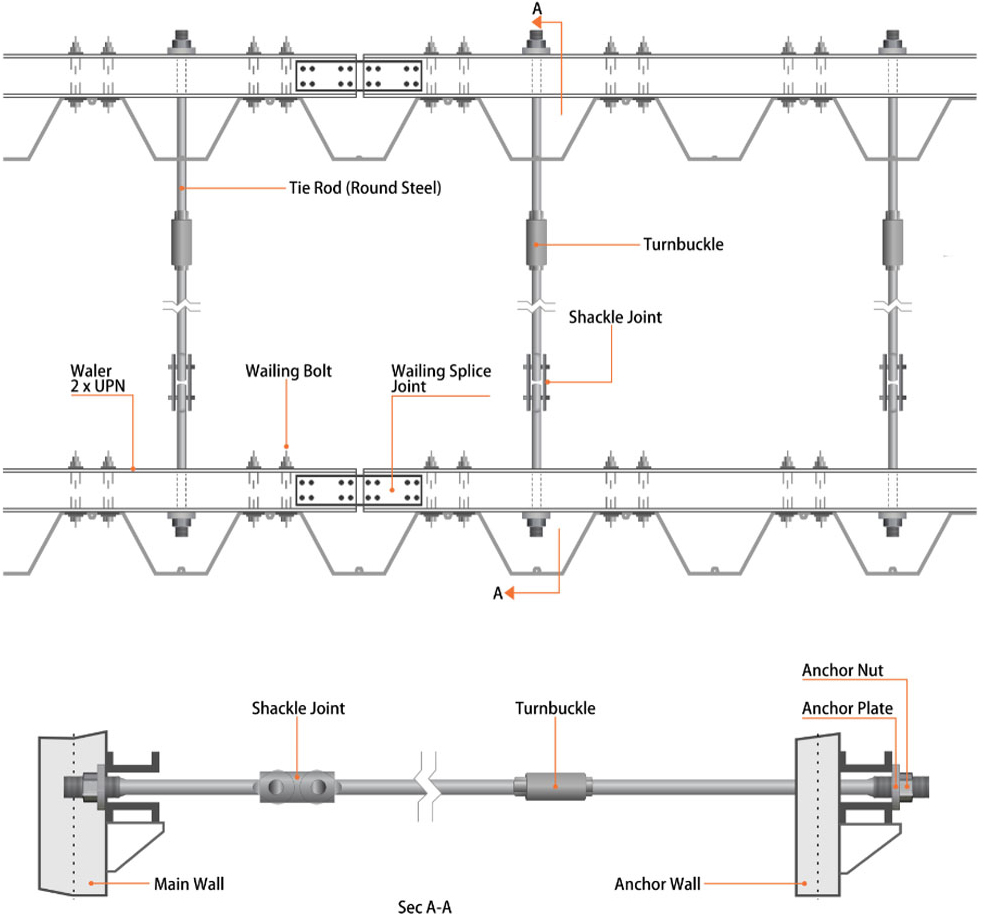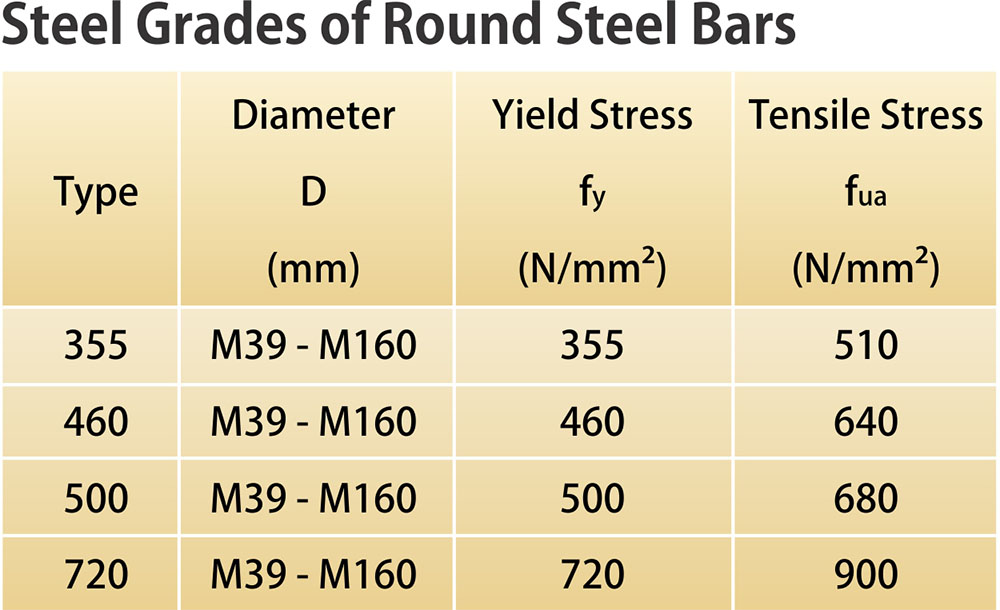Marine Ties – Round Steel Bar
Shoring systems for marine structures such as sheet pile retaining wall needs support at the top. This is achieved using a tie rod anchoring system (mostly horizontal or at a shallow angle) which is tied back to the anchor wall constructed at a distance from the main wall. Anchoring can also be done using grouted anchors. For details, refer Applications – Ground AnchorsAccording to EN 1993-5 (Eurocode 3), the thread capacity of the anchor must be reduced by notching factor kt. In accordance with many National Annexes of EN 1993-5, a kt value of 0.6 shall be used. In cases where structural detailing at the connection of the tie rod to the wall eliminate any possible bending moments, a kt value of 0.9 can be used. However, fully eliminating bending moment may not be possible due to site conditions. Hence, it is recommended to use a kt value of 0.6.
As the design standards (EN 1993-5) of tie rods distinguish between the design resistance within the tie rod thread area and tie rod shaft area, using upset end bars lead to the most economical solution. Since the anchorage zone is the most critical part, partial safety factors in the thread zone are more conservative than in the shaft zone. Due to this, enlarging the thread diameter leads to an almost homogeneous design resistance solution over the entire tie rod length. In case a simple rolled thread (no upset ends) is used, it will end up with more material in the shaft area, which in fact doesn’t improve the total capacity of the tie rod system. Due to this reason, it is the best and most economical solution to use upset end tie rods when a kt value of 0.6 is used.

We supply round steel tie rods in upset & rolled threads or rolled threads.

Waling System
Walings stiffen and align the sheet pile wall and transfer the loads from the sheet pile wall to the anchors. Walings are normally provided on the inside of the main wall as a tension member, whereas at the anchor wall it is provided at the rear as a compression member.Walings usually comprises of two steel channels placed back to back, with space between the channels to allow the tie rods to pass through. Splice connections can either be bolted or welded. For bolted splice connections, channel sections are supplied with necessary ready to install bolt holes. The waling sections are pre-drilled for the splice on one side of the joint, whereas the other side is supplied plain for cutting and drilling on site. Walings are supported on welded brackets.
As part of the waling system, we supply full range of waling bolts and accessories to suit project needs. Waling bolts are offered either with head and nut, or with two nuts.
Corrosion Protection
Based on the aggressiveness of the environment and design working life, various types of corrosion protection systems are available.- Wrapping System: These are cold applied protection tapes (for e.g. Denso) that are impermeable against water and oxygen, as well as electrically insulating.
- Hot Dip Galvanizing: In accordance to EN 1461, BS 729 or ASTM A153
- Epoxy Coating: In accordance to BS 7295, ASTM A934 or ASTM A775
- Heat Shrink Sleeve: Provides a permanent corrosion protection. After shrinkage, the wall thickness shall have a minimum thickness of 1 mm.
